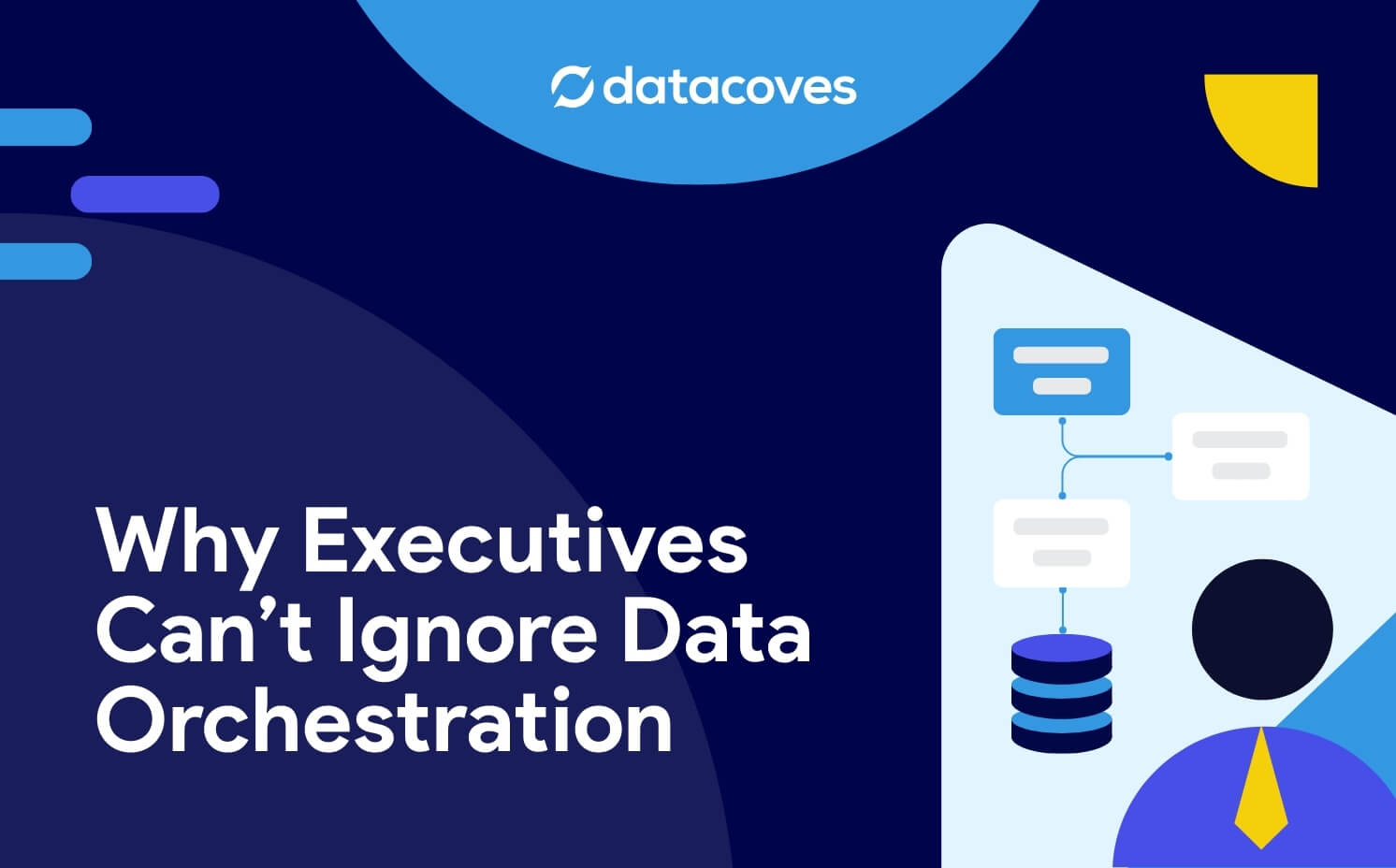Digital transformation is often seen through the lens of technological advancement and process optimization. Most blog posts and guides out there revolve around implementing new software, automating tasks, and digitizing operations. Yet, there's a pivotal element that's frequently overlooked in these discussions, especially when it comes to an enterprise: the mindset and culture within an organization. This article aims to shed light on why this is crucial in achieving true digital transformation. But first, let's investigate what digital transformation is and why it is important.
Digital transformation defined
Digital transformation is the integration of digital technology into all areas of a business, fundamentally changing how it operates and delivers value to customers. It is more than just a technological upgrade; it is a cultural shift that requires organizations to continually challenge the status quo, experiment, and get comfortable with failure. This often means walking away from long-standing business processes that companies were built upon to embrace new ways of working. Most organizations find this part the most challenging.
Why is digital transformation important
- Keeping Up with the Digital Economy: In a world where technology evolves rapidly, businesses must adapt to stay relevant. Digital transformation allows companies to remain competitive in an increasingly digital economy.
- Enhanced Data Collection and Analysis: Digital transformation creates a system for gathering the right data and fully utilizing it for better business decisions, efficiencies, and customer insights.
- Customer Expectations: Today's customers expect a seamless digital experience. Businesses need to engage with customers on their terms, using digital tools and platforms that are convenient and user-friendly.
- Increased Agility and Innovation: Adopting digital solutions empowers organizations to be more agile and responsive to changes in the marketplace or industry. It fosters a culture of innovation, encouraging new ideas and approaches.
- Operational Efficiency: Automation and streamlining of processes reduce operational costs and improve efficiency. This allows employees to focus on more strategic tasks that add value to the business.
- Risk Management and Compliance: With the increasing importance of data security and privacy, digital transformation helps businesses keep up with changing regulations and protect sensitive information.
- Sustainability: Digital processes can reduce waste and improve energy efficiency, contributing to more sustainable business practices.
Enterprise digital transformation
To achieve digital transformation in an enterprise 9 times out of 10 there must be a change in company culture. However, changing a company's culture is a formidable task. It is rare to hear statements like, “We need to fundamentally change our problem-solving approach.” This realization became clear to me through my past experiences as I noticed that managers often lacked the influence to drive change at the highest organizational levels. Additionally, the pressure to deliver quick results within budget cycles frequently hindered genuine cultural transformation.
During my tenure at various companies, under numerous managers, the consistent message was the need for improvement. However, I have come to understand that organizations, much like fireflies, develop their own rhythms. It is this unique rhythm that sets apart innovative and transformative companies from those that merely follow without achieving similar success. What do I mean by this? Let’s turn to nature for an explanation.
Firefly phenomenon - Does it mean conformity or innovation in your organization?
Nature is fascinating, especially when observing how hundreds or thousands of fireflies can synchronize their flashes.
In organizations, a similar phenomenon occurs. People will sync up and follow the status quo, even if it is not what is best for the organization. This dramatically hinders digital transformation because the loudest are not always right and yet they cause others to sync up with them. This will cause innovation to be stopped in its tracks.
In addition to this firefly phenomenon, often action differs from ambition. I recall a staff meeting with a former CIO discussing a future less dependent on Microsoft and more open to non-Windows devices. It was clear that iPhones were going to change the corporate landscape. Despite this, every new tool implemented was still optimized for Internet Explorer. This discrepancy between ambition and action often drives analytical people like me to frustration. To effect change, persistence is key. I have had ideas initially dismissed as “not my job,” only to see one later turn into a patented invention.
This manifests itself in other ways as well; have you ever seen a company advocate for fewer meetings while simultaneously criticizing those who do not include “everyone” in decision-making? I have been in such situations and can attest that decision-making by committee is not inherently superior. In fact, the more people involved in an initiative, the less effective it tends to be. This, I believe, is due to the Dunning-Kruger effect.
The more people you involve in a transformation initiative, the more likely the discussions will deteriorate to bike shedding discussions. When there is a disconnect between what is said and what is done, people take notice, and it breeds discontent.

One firefly can only affect their neighbors
Even in my most successful transformation initiatives, the radius of transformation has been limited to my sphere of influence. Sure, some of my tools and processes got global and cross-functional acceptance, but the underlying principles never took hold because they were too radical for the organization at the time. I was not part of the IT organization so the things I did were typically seen as shadow IT. Instead of focusing on what I should not be doing, it would have been more progressive for them to see how I was practicing Agile principles. They could have inquired about how my project was doing DevOps before that was in style, or how it was that this non-sanctioned product was extremely well received and people sought me out to help them improve their processes.
This means if you want the organization to be more innovative, you need to find the obstacles that hold people back from being innovative. Often politics and bureaucracy impact an initiative more than the solution itself. If you force everyone to comply with existing tools and processes, then you are imposing a constraint on the team that will limit innovation.
A typical way this manifests itself is leadership pushing the idea that one platform or process can solve every need. This can come in the form of imposing that a particular group do data transformation, or a visualization tool be the way that everyone can do analytics. I have never seen one tool that is good at everything, and you end up balancing the single solution with an unmanageable array of tools and processes. A healthy organization is a learning organization that is always open to improvement. When management encourages pushing boundaries and not taking anything as fact then the company can innovate.
A great example of driving innovation is seen in the approach of Steve Jobs, co-founder of Apple Inc. Jobs was known for his ability to challenge conventional wisdom and existing standards in the technology industry. He emphasized the importance of understanding the fundamental principles underlying a problem to innovate and create groundbreaking solutions. One notable instance was the development of the iPhone, which revolutionized the smartphone industry. Jobs and his team did not just improve on existing phones; they rethought what a phone could be, focusing on user experience and simplicity. This approach led to a product that dramatically altered how people interact with technology.
As a leader, you need to look for the fireflies who are using first principles like Steve Jobs to deliver innovative solutions and nurture, or create, a corporate culture that truly challenges what has been done without artificial constraints.
Reasoning by first principles removes the impurity of assumptions and conventions. What remains is the essentials. It’s one of the best mental models you can use to improve your thinking because the essentials allow you to see where reasoning by analogy might lead you astray.
Most fireflies eventually comply, or fly away – Loss of innovators
The transformative and innovative thinkers will either comply or leave, both of which are undesirable. In my case I tended to leave. In every organization where I have worked, I have managed to make a significant impact, often through sheer determination. During my time at one such company, our goal was to introduce a data catalog. By analyzing the problem I was able to discern what was essential for our organization vs an elaborate and idealistic vision which was capable of doing everything. While the IT organization felt it would be better to create a home-grown catalog I understood that our biggest obstacle was getting people to use a catalog in the first place, so time to market was critical. I found that Alation met the needs we had and IT kept to their vision to build an all encompassing catalog, In 3 months I had deployed Alation and 1.5 years later, the home grown solution was a tenth as good. This approach of breaking down the problem to its basic elements and building up from there was critical. It is often underestimated how challenging it is to develop and maintain custom software. This experience highlights the effectiveness of first principles thinking in deploying practical and efficient solutions.
The reality is that not everyone possesses the tenacity to advocate for change, especially in the face of substantial resistance. Not only that, but I have also witnessed people being ostracized for thinking differently, while others were promoted for fitting in. It is crucial to seek out divergent thinkers and consider the validity of their perspectives, instead of forcing them to conform. This is why true digital transformation necessitates a shift in culture.
When an individual, much like a firefly that does not flash in unison with the rest, finds themselves out of sync with the collective rhythm, they face a decision: conform and synchronize with the group or venture out to find a new collective that resonates with their unique spark.
How do we change the flash for all? Aligning mindsets for transformation
True transformational change must come from the top. Achieving enterprise digital transformation requires a deep and bold questioning of the status quo. We must critically assess our processes: Is a particular task truly necessary for a certain group? Can we identify and eliminate inefficiencies? Will adding another layer of approval or inspection genuinely enhance outcomes? It is essential to remember that human behavior often has a more profound impact than any technology or process we implement. When decision-making is centralized within one group, solutions are inevitably skewed to reflect their viewpoint. Too often, I have witnessed decisions justified by cost considerations that, upon closer inspection, proved detrimental in the broader context. An effective strategy involves analyzing the entire system, recognizing that optimizing the whole may require accepting lower efficiency in some areas.
The key is to align with the needs of users and the organization and engage leadership in this journey. With a united front, tackling the 'corporate dragons' becomes a more manageable endeavor. One practical approach is employing methodologies like the 'Job to be Done' framework.
Conclusion
Company culture and change management are frequently overlooked in the pursuit of process improvement. Employees operate within their limitations, while management ponders the lack of innovation and agility compared to other companies. The simpler path might seem to be increasing staff or updating technology, but the heart of transformation lies in the mindset of the organization. Leaders aiming for a lasting impact must embrace first principles thinking, ready to scrutinize and challenge established norms. Transformational change rarely stems from incremental improvements; truly innovative companies are those that dare to think and act differently. The organization thus faces a pivotal choice: will it adapt to a new rhythm, or compel its 'new fireflies' to fall in line with the existing order?



-Photoroom.jpg)




